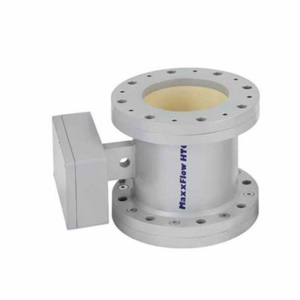
APPLICATION
SOLUTION
The solution was to replace the Impact weight meter with the MaxxFlow HTC sensor, which is specifically designed for the flow measurement of dry bulk solids during high-volume throughput. The MaxxFlow HTC is capable of delivering accurate and consistent measurements without the need for mechanical parts, making it a reliable and compact device. The installation of the MaxxFlow HTC took place independently of the direction of the line and was carried out after mechanical conveyor elements such as rotary feeders and screw conveyors.
The ENVEA engineering team analyzed the mass flow, material density, and available dimensions to determine the appropriate sensor installation. The customer used the MaxxFlow DN200 sensor and reduced the inlet cross section down to 200 mm using a reduction chute, which did not interfere with the mass flow and did not create further blockages. The customer and the ENVEA engineering team agreed on the new design, which would not cause any failures in their process or downtime, leading to a successful project execution.
CUSTOMER BENEFITS
- Stable calibration and measurement, measurement without mechanical parts
- Drastic reduction in Maintenance Costs
- Process consistency thanks to stable and reliable measurement
Verwandte Inhalte
Informationsanfrage


